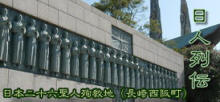|
|
Takeshi Komagome(駒込武), in Liao Ping-hui and David Der-wei Wang eds, Taiwan Under Japanese Colonial Rule, 1895-1945, Columbia University Press, 2006, pp.141-159 .
|
|
THE QUESTION OF COLONIAL MODERNITY
In the context of Taiwanese history it is important to analyze the concept of colonial
modernity, understanding both the attraction and the oppression of modernity,
without regarding it simply as evidence of historical progress. Like so many
other fashionable terms, however, the term ‘‘colonial modernity’’ is ambiguous:
its meaning depends on each writer. Before we proceed we must first make clear
what is meant by the term here.
As LeoChing has pointed out, one of the intended effects of the term ‘‘colonial
modernity’’ is to draw attention to structural similarities between Western imperialism
and Japanese imperialism, and to emphasize ‘‘the interrelationship and
interdependency of the specific Japanese case, with, and within, the generality of
global capitalist colonialism.’’1 I would like to discuss a perspective here that investigates
colonial modernity as generally as possible, while focusing mainly on
Japan’s rule in Taiwan.
Colonial rule in the nineteenth and twentieth century was different from earlier
colonial rule in that it was closely connected with modernization in various
fields, such as politics, economic development, and the use ofmilitary power.Not
only were the new rulers superiormilitarily, but they carried prestige as representatives
of Western civilization. The notion of ‘‘civilization’’ involved a variety of
elements, such as a political systembased on parliamentarism, the capitalistmode
|
| |
首頁Home/
本土信徒總檔
/
教會史話總檔
/
宣教師人物總檔 / 外國神父修女列傳
/ 日人列傳總檔 /
原住民信徒
/
諸家論述
|
